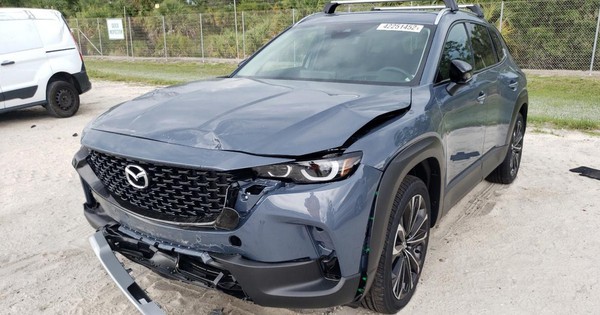In the wave of infections caused by the BA.2 mutation, the number of cases is still increasing exponentially, but hospitalization and death rates have decreased, countries have sufficient tools to prevent and respond to this disease.
Covid-19 again Rise in Europe, weeks after countries in turn relaxed epidemic prevention restrictions. BA.2 (also known as “stealth” Omicron) is widespread in Asia, especially in Hong Kong, South Korea. Experts predict that the US is also bracing for a new Covid storm, weeks after Europe.
For many countries, this is not an easy time. On the one hand, the worst part of the pandemic has passed, according to epidemiologists, and the number of hospitalizations and deaths has decreased. On the other hand, scientists are questioning whether Covid-19 will worsen in the future, when new strains emerge.
Experts point out similarities and differences between current and past new epidemics.
First, viral infections will still increase exponentially. The Omicron BA.2 sub-variant has become popular over the last few weeks in Asia and Europe. Laboratory studies show it to be 30% more infectious than the original version.
Despite the tensions, the world’s epidemiology charts are nearly unidirectional. The low number of infections is initially stable and quickly increases exponentially. Cases peak and move sideways, declining steadily or suddenly.
The number of F0 cases in Europe rises again, according to data from Our World in Data. Experts use these trends to predict the global situation.
Typically, hospitalizations can increase in one to two weeks, deaths increase in four to six weeks, depending on the capacity of the public health system. Hong Kong and South Korea are in this phase, reporting more deaths than at any time in the past two years. However, the death rate in Hong Kong is much higher than in South Korea due to the delayed response to the epidemic.
Second constant point: Previous epidemic prevention tools are still effective. No matter how contagious the strain is, measures like vaccination, F0 isolation, wearing masks, and testing all prevent the virus. If the implementation is effective, the spread of Covid-19 will slow down. If removed too soon, the epidemic escalates.
The number of infections in Europe is rising at the same time that authorities are removing requirements to wear masks, isolate, use vaccine certificates and a host of other precautions. This shows that BA.2 has a strong chance of spreading, partly because the community has relaxed its epidemic prevention activities.
A similar situation exists in Asia. The reason for the increase in daily deaths is not due to the intrinsic nature of the virus. The BA.2 subtype does not appear to cause any more severe symptoms than the original Omicron, according to the scientists. Nor do they avoid the more effective vaccines.
In Hong Kong, the F0 death toll is soaring mainly because many elderly people have not been vaccinated. The previous “No Covid” policy also left some people with natural immunity. In South Korea, the number of infections is high but the death rate is low because older people are almost completely vaccinated.

Medical staff transfers Covid-19 patients to Princess Margaret Hospital, Hong Kong in March 2022. Photo: Voice
However, the new phase of the epidemic has some differences. First, Mortality and hospitalization rates are reduced because many areas have high immunity and are ready to respond.
In the United States, 65% of the total population received at least two doses of the vaccine, 50% received a booster shot. Including people who have the disease, experts say nearly three-quarters of the country’s population is immune to Covid-19, according to the Institute for Health Metrics and Evaluation. This means hospitalization and death rates in the US are falling, even as the number of infections soars.
European countries have a similar trend. According to Our World in Data, the region’s death rate per one million population is 2.3, down sharply from a spring peak of 4.6.
In Asia-Pacific, hospitalization and death rates for Omicron waves are also lower than for other types. South Korea, Australia, New Zealand and Singapore reported a death rate per 100 F0 cases of 0.1% or less, compared with 0.8% in the UK or 1.2% in the US.
As the world enters its third year of the pandemic, leaders have learned deeply about the dangers of subjectivity, knowing how to mitigate the worst impacts of Covid-19.
Countries ensure sufficient hospital beds, doctors and nurses to treat Covid-19 patients, and meet other general health care needs. Asia is also spending time distributing vaccines, which greatly reduces the risk of hospitalization due to Covid-19. Although the number of infections has soared now, the epidemic appears to be less deadly than before.
The state also has the means of treatment, avoid serious illness, in contrast to the time before governments relied almost entirely on vaccine prevention.
AstraZeneca or Lily Elli monoclonal antibody therapy can prevent Covid-19 in people who are not eligible for the vaccine. They are also used as a therapy to treat people with Covid-19 in some countries. Antibodies act as an additional layer of immunity, surviving with the vaccine, preventing infection in the most susceptible groups.
Many countries have also approved oral Covid-19 treatment drugs, which are easy to use in the early stages, to prevent the disease from getting worse. Two typical drugs are Paxlovid from Pfizer and molnupiravir from Merck.
Pharmaceutical company Pfizer said on January 18 that Paxlovid was effective against the Omicron mutation. Therefore, the main ingredient of the drug is nirmatrelvir, which is highly resistant to Omicron by Beta and Delta. According to Pfizer, this is an encouraging signal that Paxlovid will become an important therapeutic tool as new strains spread. This drug has been licensed for use in the US and many European countries Technology transfer for Vietnam and some developing countries.
The World Health Organization (WHO) Expert Panel on March 2 also recommended the immediate use of antiviral drugs molnupiravir to treat Covid-19 for people who are at high risk of severe disease. The right group to use the drug is Covid-19 patients with mild symptoms but at high risk for hospitalization, such as people with weakened immune systems, people who are not vaccinated, the elderly, and people with chronic diseases.
However, after more than two years of the epidemic, people get tired and subjective than before because of vaccination. The global death toll is still rising, but collective action is not keeping up with that number. In many countries, people are angry with inconsistent government decisions. Some people are living with Covid-19 with a “everybody be F0” mentality.
Public attitudes can easily influence decisions to respond to outbreaks of state officials. Many countries are delaying enacting crackdowns even as Covid-19 begins to take its toll. In some countries, people are protesting the re-imposition of rules on the use of masks or are afraid to show vaccination cards.
The biggest difference, according to Panagis Galiatsatos, a professor at Johns Hopkins School of Medicine, is that the world knows enough about the pandemic to see the return of Covid-19 as an endemic disease, but there is enough global work to be done. caused many victims.
Thu Linh (Based on Voice)
at Blogtuan.info – Source: vnexpress.net – Read the original article here



